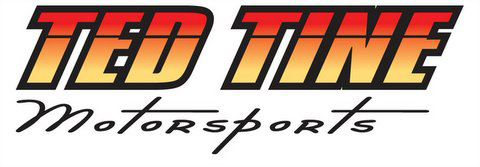
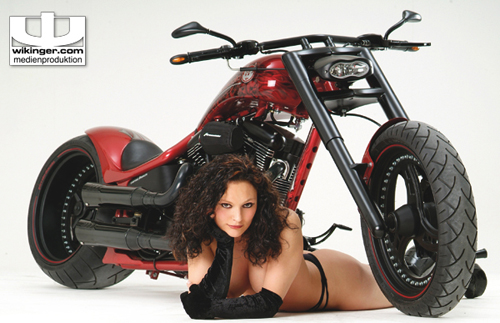
For those who know me, you all understand that I am an imperfect perfectionist. For those who do not know me, it means if there is something that is bothering me – then I have to fix that problem right away. Here is my latest conquest on the highway of life.
Lately I have been researching a solution to something that is dear to me – Why do the Harley touring bikes get so squirrelly at high speed (over 85 mph)?
When I first got the shop bike it had been neglected. It is a 1999 FLHTPI (or cop Electra Glide). After rescuing it from the attic of a local H-D dealer I began to test different ideas on the bike as far as performance. I soon found that it does not matter if you make the engine a hot rod monster, if the chassis cannot handle it. So my focus changed.
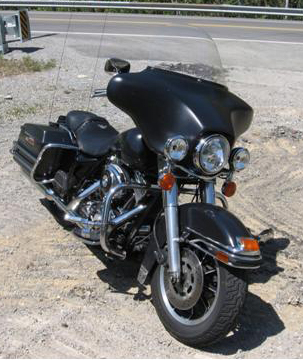
A few years ago I met the creator of the True-Track at the Cincinnati V-Twin show, Wil Phillips R.I.P. He demonstrated the dynamics involved with and without his product. I bought one and began with that.
Before installing the bike would start a wobble in curves at 40 mph, and after installing the bike could handle the same curves at 60 mph without a problem.
Soon after that was cured I began running with the big trucks on the interstate. I then found another wobble issue. At 90 mph if there was a semi truck ahead, there would be drafting turbulence that caused the bike to wobble from the front end; also when riding 90 -95 mph in a lean I discovered another wobble.
With this new problem came a thorough front to rear check. Everything was within specifications. So then I sought out other riders and found Road Glides allegedly did not have this front-end issue. I even met a H-D factory rep at a State Rally and pressed them, if they experienced wobbling with their Electra Glides. The only answer they could give was that the fork-mounted fairing had limitations. BIG SURPRISE!
So if the issue is the fairing, then I looked towards other manufacturers of motorcycles also featuring fork mounted fairings and could not find the same issue. So what is different about the Electra Glide? As I poured over the bike time and time again, I kept noticing the front forks on FLs are set up different than anything else on the road. The fork tubes follow the steering stem, but all the others have the fork tubes in front of the steering stem even if is a just slight amount.
So the closest front-ends to what FLs use are very similar to the front forks on sport bikes. Then I started looking at the sport bikes for what they did to reduce or even eliminate high speed wobbles.
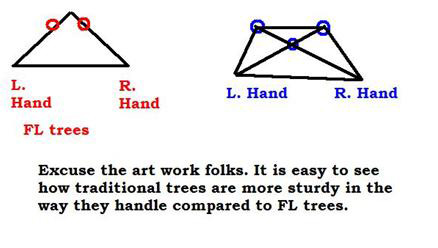
So most sport bikes have the swing arm tied to the frame. The FL swing arm is hinged to the rubber-mounted drive-train, and H-D drive-trains are coupled at three points to the frame. The next comparison was the front end. Many track operated sport bikes use steering stabilizers. In fact some manufacturers install them at the factory on some models. There was the key; a steering stabilizer might actually work.
Then began all the emails, phone calls, and online research. A fellow rider suggested I contact Wheelers Performance located on the famous Dragon, US 129. A call to them confirmed they did install steering stabilizers on Road Kings to help reduce wobbling when running the curves at high speed. As soon as I could get the time I threw a leg over my shop bike and rode full tilt over to their shop for a quick explanation of their installation and to order the parts.
After a few weeks I received the kit and went about installing, but not in the way they suggested. There were two reasons: 1. the original had the stabilizer placed with the adjuster going to my right and I wanted to have it on my left so that I can adjust it on the fly and 2. I wanted to retain the air baffle that the older FLs have to prevent the air from coming up in behind the fairing.
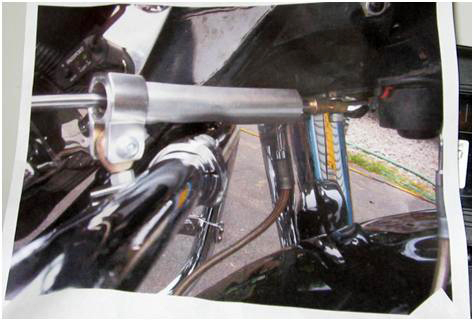
So as I began to tap the hole, I found that the tap handle could not rotate enough to reset for another grab. As I studied the tap it occurred that the drive end fit near perfect into the 1/8-inch drive of a socket. So after placing the two together, I used an Allen socket to fit in the business end of the socket and attached the socket wrench to the tap.
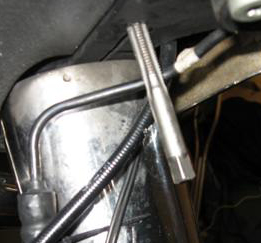
I carefully started the tap until I got a bite. Then I hosed the tap from the top down with WD-40. Carefully I turned the tap until an occasional bit of metal residue would stop the progress. A little backing out of the tap and then some WD-40 to flush out the residue would allow progress to continue. Then I would continue until at last the threading was complete.
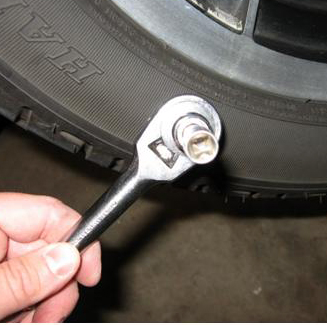
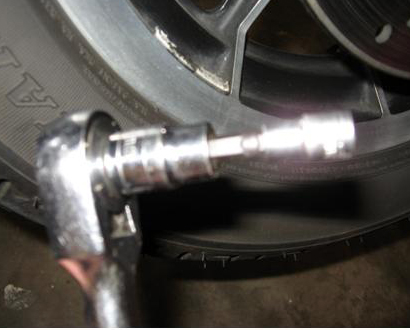
I installed the mounting tree end of the stabilizer as suggested, but found that the stabilizer passed over the crash bar and prevented the forks from turning enough to lock. Also the tree end was binding slightly. So I removed the bolt and installed a nut to act as a spacer so that tree end could move through its full range.
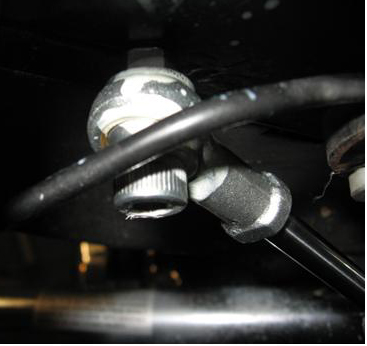
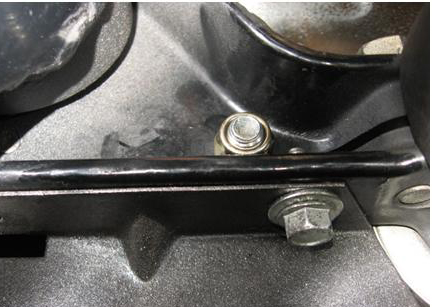
The crash bar mounting fixed itself at this point; the stabilizer could go under the crash bar and allow the air baffle to continue as intended. I checked several times about losing one inch from the fork travel. It did not seem to be problem in the shop so the real world would have to be the testing ground.
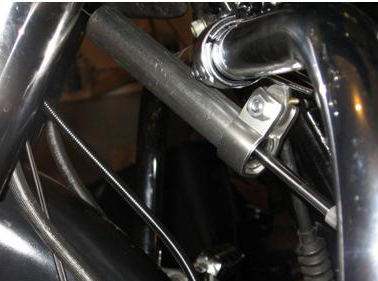
With the stabilizer installed, I began the real world test. I found that the curves that the bike went from handling at 60 could be taken at 70-75 mph without a problem. I also found that potholes and other surface irregularities were not a problem either. The front end stayed where I intended it to be. Even riding at 95 mph was no longer a hair-raising experience. Perhaps between prevent the driveline from moving side to side and adding the stabilizer the Electra Glide can be a true touring bike?
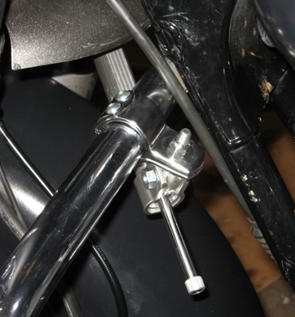
I sat down and drew out a sketch of what is involved both with and without the stabilizer as well as comparing the FL tree end to a more traditional tree so that other cans visualize the dynamics involved.
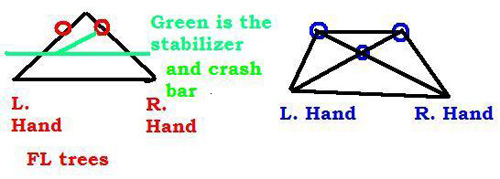
So I will be testing this as time goes on. Be sure to check out the Latest News on my shop’s website www.R-RatedCustoms.com for the progress. Once this setup proves itself worthy I will put together a complete installation kit so fellow FL riders can fully enjoy their motorcycles as I am now able.
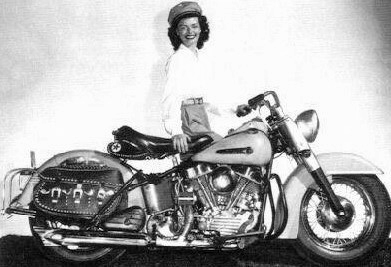
Feel free to contact me with any questions,
Anthony C. Roberson
R-Rated Customs
(931) 607-7399
rratedcustoms@bellsouth.net
